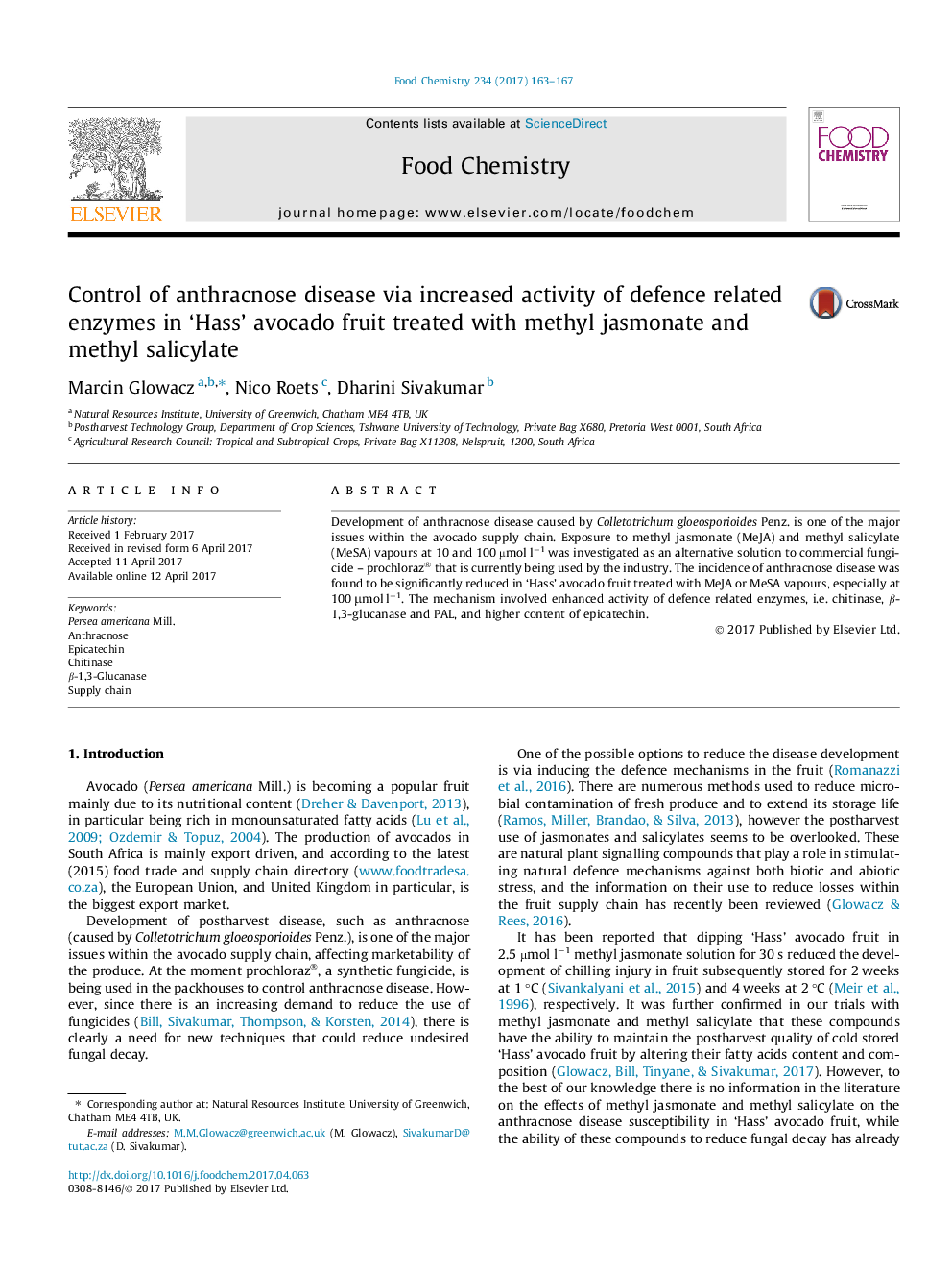| کد مقاله | کد نشریه | سال انتشار | مقاله انگلیسی | نسخه تمام متن |
|---|---|---|---|---|
| 5133126 | 1492058 | 2017 | 5 صفحه PDF | دانلود رایگان |

- MeJA or MeSA vapours exposure at 100 μmol lâ1 reduced disease incidence in avocados.
- Epicatechin content was higher in the skin of MeJA or MeSA exposed fruit.
- The activity of chitinase, β-1,3-glucanase was higher in MeJA or MeSA exposed fruit.
- MeJA or MeSA vapours exposure reduced the susceptibility of the fruit to anthracnose.
Development of anthracnose disease caused by Colletotrichum gloeosporioides Penz. is one of the major issues within the avocado supply chain. Exposure to methyl jasmonate (MeJA) and methyl salicylate (MeSA) vapours at 10 and 100 µmol lâ1 was investigated as an alternative solution to commercial fungicide - prochloraz® that is currently being used by the industry. The incidence of anthracnose disease was found to be significantly reduced in 'Hass' avocado fruit treated with MeJA or MeSA vapours, especially at 100 μmol lâ1. The mechanism involved enhanced activity of defence related enzymes, i.e. chitinase, β-1,3-glucanase and PAL, and higher content of epicatechin.
Journal: Food Chemistry - Volume 234, 1 November 2017, Pages 163-167